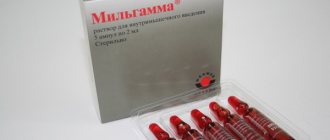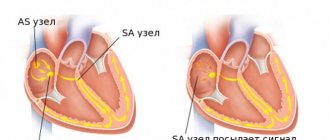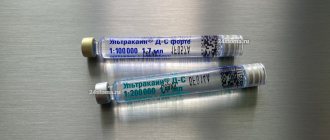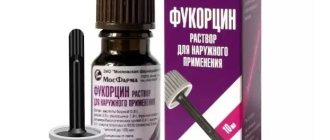Compound
The composition of Milgamma in the form of a solution for intramuscular administration includes several active substances. In particular, the ampoules contain: pyridoxine hydrochloride , thiamine hydrochloride , cyanocobalamin and lidocaine hydrochloride .
Also, Milgamma injections contain additional substances: benzyl alcohol, potassium hexacyanoferrate, sodium hydroxide, sodium polyphosphate, water for injection.
Vitamins in tablets contain benfotiamine , pyridoxine hydrochloride , and also contain anhydrous colloidal silicon dioxide, croscarmellose sodium, microcrystalline cellulose, talc, povidone K30, and partial long-chain glycerides.
Release form
The medicine is available in the form of a solution (Milgamma injections for intramuscular administration), as well as in the form of tablets and dragees.
- Vitamins in the form of a solution are contained in 2 ml ampoules. The ampoules are made of brown hydrolytic glass, each of them has a label and a white dot. The package contains 5 or 10 ampoules.
- Film-coated tablets are packaged in 30 or 60 pcs.
- Milgamma Compositum pellets are also produced - biconvex, round in shape, white. The dragee is contained in a blister pack of 15 pieces. There may be 2 or 4 blisters in a cardboard pack.
About the preparation
Milgamma refers to vitamin preparations. Its composition contains:
- pyridoxine;
- thiamine;
- cyanocobalamin.
Milgamma in Latin is interpreted as milgamma and, in addition to vitamins B1, B6, B12, contains additional components, depending on the form of release. Milgamma is available in the form of an injection solution and also has a tablet form. The solution is packaged in 2 ml ampoules made of dark glass. In addition to vitamins, the composition of the medicine contains lidocaine. This is an anesthetic that can numb the injection, since vitamins are quite painful when administered.
Milgama injections are performed only intramuscularly, deep into the muscle layer, to prevent the accumulation of the drug in fatty tissue. If the medication is administered quickly, the patient may experience side effects:
- dizziness to the point of fainting;
- nausea;
- vomit;
- tachycardia.
Milgamma tablets are white, convex on both sides, and have inclusions on the break.
pharmachologic effect
The drug Milgamma contains neurotropic vitamins, which belong to group B. The drug is used in a therapeutic dose for diseases of the nerves and nervous tissue, in which patients have impaired nerve conduction or inflammatory-degenerative phenomena.
The drug Milgamma is also prescribed to people with diseases of the musculoskeletal system. The use of a drug containing large doses of vitamin B relieves sharp pain, activates microcirculation processes, improves hematopoiesis and the functioning of the nervous system.
Vitamin B1 (thiamine), entering the body, is converted through phosphorylation into cocarboxylase and thiamine triphosphate. In turn, cocarboxylase takes part in the processes of carbohydrate metabolism, normalizing the functions of nervous tissue and nerves and improving conductivity in the nerves. If there is a deficiency of vitamin B1 in the body, then under-oxidized products of carbohydrate metabolism can accumulate in the tissues, provoking a variety of pathological conditions.
When determining which is better - Milgamma injections or tablets, it should be taken into account that instead of thiamine chloride, the tablets contain benfotiamine, a fat-soluble derivative of thiamine.
Vitamin B6 (pyridoxine) gets phosphorylated when it enters the body. The products of its metabolism are involved in the decarboxylation of amino acids, as a result of which physiologically active mediators are produced in the body - adrenaline , histamine , tyramine , dopamine , serotonin . In addition, vitamin B6 affects tryptophan .
Vitamins B1 and B6 provide potentiation of each other’s influence, therefore Milgamma vitamins in injections and tablets have a pronounced beneficial effect on the health of patients with diseases of the nerves and musculoskeletal system.
Vitamin B12 (cyanocobalamin) has an antianemic effect, activates the synthesis of nucleic acids, choline, creatinine, methionine. Takes part in metabolic processes in cells. The substance reduces pain resulting from damage to the peripheral nervous system and activates nucleic acid metabolism.
Lidocaine has a local anesthetic effect.
Functions and sources of B vitamins
The group of B vitamins is quite extensive: eight vitamins. They are united by a similar chemical composition, but have different properties, purpose and number. B vitamins are water soluble and play a very important role in metabolism.
It is very important that a person’s diet includes foods that contain these vitamins. So, 8 B vitamins:
- B1, or thiamine.
This vitamin was one of the first to be discovered by the entire group. The vitamin of vivacity and spirit is considered an “anti-nervous” vitamin because it has a positive effect on the functioning of the nervous system and brain function. Thiamine converts carbohydrates into energy, supports muscle function and heart function9. This vitamin can be found mainly in plant foods: cereals, sprouted grains, cereals, bran, etc. - B2, or riboflavin,
is involved in the production of erythrocytes - red blood cells, also takes part in the metabolism of carbohydrates and fats, is indispensable for healthy skin, nails, hair growth, promotes growth, and prevents cancer formations. It is important for the process of iron absorption and hemoglobin synthesis. This vitamin is found in green vegetables, mushrooms, pasta, bread, fish, milk and meat9. - B3(PP), or nicotinic acid,
helps to establish enzymatic processes and is involved in carbohydrate and cholesterol metabolism. Promotes successful absorption of all nutrients. The most vitamin B3 is found in eggs, fish, meat, kidneys, liver, buckwheat, and green vegetables. - B5, or pantothenic acid,
plays an important role in metabolism, in the metabolism of proteins, carbohydrates and fats, participates in the formation of a strong immune system, increases hemoglobin in the blood, normalizes the functioning of the thyroid gland, adrenal glands and nervous system. Pantothenic acid is found in eggs, meat and fish products, brewer's yeast, soybeans and mushrooms9. - B6, or pyridoxine,
has a beneficial effect on metabolism, many metabolic processes occur with its participation - it regulates the action of enzymes, has a beneficial effect on the function of the nervous system, liver, hematopoiesis, on the immune, nervous and cardiovascular systems10. In the human body, about 80% of vitamin B6 is found in muscles, liver, myocardium and kidneys. Without it, the synthesis of neurotransmitters (substances that are responsible for mood and brain function) and the synthesis of prostaglandins (substances that regulate heart function and blood pressure) are impossible. There is a lot of pyridoxine in nuts, especially walnuts and hazelnuts, tomatoes, carrots, cereals, cabbage, citrus fruits, berries (strawberries, cherries). - B7, or biotin,
is important for regulating blood sugar levels, as it is part of the enzymes involved in glucose metabolism. Vitamin B7 is also responsible for the normal functioning of the sweat and male gonads, nervous, immune and digestive systems, bone marrow, skin and hair. The richest sources of vitamin B7 are the liver and kidneys of large animals, yeast, legumes (soybeans, peanuts), cauliflower, nuts, boiled eggs, spinach, and beets10. - B9, or folic acid,
is necessary for growth, development of the circulatory and immune systems. It is especially important in the first trimester of pregnancy for the formation of the fetal nervous system. Contained in green vegetables (parsley, celery, spinach, cabbage), as well as tomatoes, legumes, nuts, beets, bananas9. - B12, or cyanocobalamin,
is responsible for the growth and development of the nervous system and promotes the formation of nucleic acids. B12 is found only in products of animal origin: poultry meat, offal (liver, heart), seafood, sea fish, eggs9.
Pharmacokinetics and pharmacodynamics
The abstract indicates that after intramuscular injection, thiamine is quickly absorbed and enters the blood. It is distributed unevenly in the body. Since there are no significant reserves of thiamine in the body, it must be supplied every day. The substance can penetrate the blood-brain and placental barriers. Excreted through the kidneys. Thiamine, compared to other vitamins, is stored in the body in the smallest quantities.
Pyridoxine , after the solution has been injected intramuscularly, quickly enters the bloodstream and is distributed throughout the body. Approximately 80% of the vitamin is bound to plasma proteins. The substance is able to penetrate the placenta and enters breast milk. Later it is oxidized to 4-pyridoxic acid, which is excreted through the kidneys after 2-5 hours.
Cyanocobalamin , entering the human blood, binds to proteins, resulting in the formation of a transport complex. Then, in this form, it is absorbed by the liver tissue. It also accumulates in the bone marrow. After cyanocobalamin is excreted into the intestines with bile, it can be reabsorbed.
Indications for use of Milgamma
The solution and tablets are prescribed as part of the complex treatment of diseases and syndromes of the nervous system that have different origins.
The following indications for the use of Milgamma are determined:
- neuritis;
- neuralgia;
- retrobulbar neuritis;
- facial nerve paresis
- ganglionitis (including herpes zoster );
- neuropathy;
- plexopathy;
- alcoholic, diabetic polyneuropathy .
There are also indications for the use of injections in people suffering from night cramps and neurological symptoms osteochondrosis . What the drug helps with as part of complex therapy, and why Milgamma injections are also prescribed, you can find out in more detail from your doctor.
When is a prescription written?
Milgamma refers to medications for which the doctor does not write a prescription . But at the request of the patient, the doctor can write a prescription for the medicine, where the name Milgamma is indicated in Latin. The product can be prescribed both in tablets and in solution for injection. In both cases, Milgamma's recipe is written in Latin.
Example recipe:
- Rp.: Sol. "Milgamma" 2 ml
- Dtd: No.5 in amp.
- S.: Inject intramuscularly.
The remedy is indicated for:
- neuroses of various origins;
- facial nerve paresis;
- night cramps;
- decreased brain activity;
- inflammation of the trigeminal nerve;
- osteochondrosis;
- plexopathies;
- inflammation of peripheral nerves.
It is these disorders that are caused by a deficiency of B vitamins in the body.
Side effects
Side effects of Milgamma appear, as a rule, in rare cases.
In particular, the following side effects are rarely possible:
- Immune system: allergic manifestations.
- Nervous system: impaired consciousness, dizziness .
- Cardiovascular system: tachycardia , arrhythmia , bradycardia.
- Digestive system: vomiting.
- Skin: severe sweating, itching , acne .
- Musculoskeletal and connective tissue: cramps .
Sometimes after Milgamma is administered intravenously to a patient, he may experience irritation in the area where the solution was injected. Systemic reactions can occur only with very rapid administration or in case of overdose.
If any other side effects occur or the negative effects described above are aggravated, you should immediately tell a specialist about this, who will give recommendations on how to inject the ampoules, or replace the drug.
Milgamma
Milgamma is a complex vitamin preparation based on B vitamins, which have long been used to treat diseases of the musculoskeletal system due to its analgesic and anti-inflammatory properties, as well as the ability to stimulate tissue regeneration. In addition, their pharmacological “resume” includes such an important quality as neurotropism, i.e. participation in processes occurring in the nervous system, including the metabolism of neurotransmitters and the transmission of nerve impulses. Each of the components of the milgamma deserves to be discussed in more detail. Vitamin B1 (also known as thiamine) is an essential link in carbohydrate metabolism and in the chain of biochemical transformations called the Krebs cycle, which results in the formation of ATP. Vitamin B6 (pyridoxine) takes part in protein metabolism and, to the extent possible, in the metabolism of fats and carbohydrates. This “sweet couple” of vitamins, enhancing each other’s effects, is a real benefit for the neuromuscular and cardiovascular systems. Vitamin B12 (cyanocobalamin) is involved in the formation of the myelin sheath of nerve fibers, stimulates hematopoiesis, dulls pain associated with effects on peripheral nerves, and stimulates the metabolism of nucleic acids through the activation of folic acid. In addition to this vitamin triad, milgamma contains the local anesthetic lidocaine. One of the most popular areas of application of milgamma lately is back pain, i.e.
K. milgamma is a very successful reliever of acute spinal pain, both in combination with NSAIDs and in “solo” mode. When using large doses of milgamma, the analgesic effect created is quite comparable to that of diclofenac, a veteran of the pharmacy counters, who ate a dog in relieving the pain syndrome.
All of the above applied to milgamma in the form of an injection solution. As you know, B vitamins are very easily destroyed in the body, being water-soluble. However, pharmacologists have eliminated this gap by creating the drug milgamma compositum in the form of pills. It contains the fat-soluble thiamine analogue benfotiamine and pyridoxine. This substance is almost completely bioavailable: it penetrates the intestinal epithelium and is transformed into thiamine diphosphate, already inside the cells, which provides a longer lasting analgesic effect.
Milgamma (now we are talking specifically about the injection form) is administered intramuscularly and, preferably, deeply. If the pain syndrome is acute, then you should start with daily 2 ml of solution for 7-10 days. After acute pain subsides, you can switch to oral milgamma compositum, or administer the drug more rarely (2-3 times a week for 2-3 weeks). Milgamma should be administered slowly, because otherwise, you may experience dizziness and arrhythmia. The same symptoms are characteristic of an overdose of this drug.
Instructions for use of Milgamma (Method and dosage)
If a patient is prescribed Milgamma injections, the instructions for use must be carefully followed. Initially, the medicine is injected deep into the muscle, 2 ml once a day for 5-10 days. If the injections are intended for maintenance treatment, then 2 ml are administered 2-3 times a week. You can also take the drug in tablet form for maintenance therapy (1 tablet daily).
The instructions for use of Milgamma indicate that to quickly eliminate pain, you should use ampoules or tablets (1 tablet three times a day). Treatment can last about one month. The doctor should monitor the patient's health status weekly. Experts advise switching to internal administration of the drug as quickly as possible. Please note that Milgamma suppositories are not available.
The course of treatment with injections can last longer only as prescribed by a doctor. How often you can give injections, and what form of release is preferable in each specific case, you should also ask your doctor.
Substitutes for Milgamma
If it is impossible to treat with Milgamma, the patient may be prescribed an analogue that is similar in action and contains the same group of vitamins.
The drugs of choice were:
- Vitagamma;
- Combilipen;
- Binavit;
- Neuroplex;
- Neuromax.
When choosing an analogue, the doctor is guided by the results of laboratory tests, the clinical picture, and the patient’s condition. If the patient has a deficiency of B1 and B6, and B12 is sufficient, then treatment is carried out with Milgamma compositum, since it contains only thiamine and pyridoxine. If, in addition to vitamin B, the patient has a deficiency of vitamin PP, then Pentovit is prescribed. It is worth noting that Milgamma is the most concentrated drug, which is the most effective for relieving pain caused by damage to nerve endings.
Interaction
If vitamin B1 is mixed with sulfate solutions, it completely disintegrates.
Inactivation of thiamine (benfotiamine) is noted in the presence of acetates, mercury chloride, iodides, carbonates, Riboflavin , tannic acid, ferric ammonium citrate, Penicillin , metabisulfite.
Pyridoxine in therapeutic doses can reduce the effect of levodopa, therefore it is not used with levodopa and medications containing it. There is also interaction with Penicillamine , Cycloserine , Isoniazid .
Cyanocobalamin is inactivated in the presence of heavy metal salts. Riboflavin also has a destructive effect on it, especially with parallel exposure to light.
Instructions for use MILGAMMA® (MILGAMMA®)
Thiamine is completely destroyed in solutions containing sulfites. Other vitamins can be destroyed by degradation products of vitamin B1.
The use of pyridoxine (vitamin B6) in therapeutic doses may reduce the effect of levodopa.
The drug interacts with cycloserine, D-penicillamine, and sulfonamides.
Interactions due to lidocaine hydrochloride content
Lidocaine enhances the inhibitory effect on the respiratory center of anesthesia.
With the simultaneous use of lidocaine hydrochloride with hypnotics and sedatives, the inhibitory effect on the central nervous system and respiratory center may be enhanced.
Ethanol enhances the inhibitory effect of lidocaine on respiratory function.
When used simultaneously with beta-blockers, a reduction in the dose of lidocaine is necessary.
When used simultaneously with polymyxin B, monitoring of respiratory function is necessary.
During treatment with MAO inhibitors, lidocaine should not be used parenterally, as this increases the risk of developing arterial hypotension.
Lidocaine may enhance the effect of drugs that block neuromuscular transmission, since the latter reduce the conduction of nerve impulses.
In case of intoxication with cardiac glycosides, lidocaine can increase the degree of AV blockade. Lidocaine weakens the cardiotonic effect of cardiac glycosides.
Combinations that should be used with caution
When used simultaneously with beta-blockers, the metabolism of lidocaine in the liver slows down, the effects of lidocaine increase (including toxic ones) and the risk of developing bradycardia and arterial hypotension increases.
When used together with curare-like drugs, muscle relaxation may deepen (up to paralysis of the respiratory muscles).
When used simultaneously with norepinephrine and mexiletine, the toxicity of lidocaine increases (lidocaine clearance decreases).
When used simultaneously with midazolam, the concentration of lidocaine in the blood plasma increases.
When used together with PSP, barbiturates (including phenobarbital), it is possible to accelerate the metabolism of lidocaine in the liver and reduce the concentration in the blood.
When used simultaneously with antiarrhythmic drugs (amiodarone, verapamil, quinidine, disopyramide, propafenone), hydantoin derivatives, the cardiodepressive effect is enhanced; simultaneous use with amiodarone may lead to the development of seizures.
When used simultaneously with procainamide, stimulation of the central nervous system and the occurrence of hallucinations are possible.
When used together with prenylamine, the risk of developing ventricular arrhythmias increases.
When used simultaneously with rifampicin, a decrease in the concentration of lidocaine in the blood is possible.
Phenytoin enhances the cardiodepressive effect of lidocaine.
Vasoconstrictors (epinephrine, methoxamine, phenylephrine) help slow the absorption of lidocaine and prolong its action.
Milgamma's analogues
Level 4 ATX code matches:
Neurobex Forte
Neurobex
Milgamma compositum
Neurorubin
Neurobion
Combilipen
If a replacement medication is needed, you may consider using similar medications that have similar effects on the body. What to replace the product with is determined only by the doctor, who will select the optimal analogues of Milgamma in injections and tablets. You can choose both imported and Russian analogues.
To date, the following drugs analogues of Milgamma are known:
- Neuromultivitis
- Binavit
- Triovit
- Pikovit
The most optimal substitute is the similar composition of Combilipen , as well as Neuromultivit.
The price of Milgamma's analogues is, as a rule, somewhat lower.
Which is better: Milgamma or Combilipen?
Combilipen is also a complex vitamin drug, which includes B vitamins. The drug is prescribed as part of complex therapy for patients with neurological diseases. These are similar products, only they have a different manufacturer, and Combilipen can be purchased at a lower price.
Neuromultivit or Milgamma - which is better?
The composition of these drugs is similar, but Neuromultivit does not include lidocaine among its components. Neuromultivit, unlike Milgamma, is prescribed for the treatment of children. Why each drug is prescribed will be explained in more detail by the treating specialist.
Dangerous shortage
B vitamins affect the functioning of the nervous system and therefore it is the nervous system that will signal us about their deficiency.
The most noticeable and troublesome is the deficiency of vitamins B1 and B6 .
Lack of vitamin B1 provokes a number of neurological disorders. Early symptoms of vitamin B1 deficiency include fatigue, irritability, memory loss, loss of appetite, sleep disturbances, abdominal discomfort and weight loss. Eventually, severe vitamin B1 deficiency (beriberi disease) may develop, characterized by problems with the nervous system, brain and heart function. With prolonged B1 deficiency, nerve damage develops. Typically, the process begins with a tingling sensation in the toes, burning and pain in the feet, which worsens at night, cramps in the calf muscles and pain in the legs.
With chronic deficiency of thiamine in food, polyneuropathy develops. This disease is accompanied by symptoms such as numbness of the extremities, decreased sensitivity in the arms and legs, a burning sensation and a sensation of “pins and needles”.
Signs of vitamin B6 are varied. There may be such manifestations as irritability, lethargy, loss of appetite, and especially the skin “speaks” of this deficiency. Seborrhea and rashes appear, sebum secretion changes, the skin becomes dry, especially in the nasolabial fold10. Cracks appear in the corners of the lips, and stomatitis appears on the mucous membranes of the mouth. At the same time, the digestive system suffers. With a pronounced deficiency, disruptions in the functioning of the central nervous system are observed: insomnia, depressive disorders, convulsions similar to an epileptic seizure.
Pyridoxine deficiency can lead to polyneuropathy, a disease that is characterized by a feeling of numbness and “pins and needles.”
A lack of both vitamins leads to impaired hematopoietic function and the development of anemia.
If the above-mentioned signs appear, it is recommended not to self-medicate, but be sure to
consult a doctor!
With alcohol
Milgamma is prescribed after alcohol intoxication in order to restore the body. At the same time, alcohol and Milgamma, both in injections and tablets, should not be consumed.
Despite the fact that the compatibility of this medicine with alcohol is not described in the official instructions, such a combination completely neutralizes the positive effect of using the drug. Also, a number of side effects can be caused by combining alcohol and lidocaine , such as headache , drowsiness , and anxiety .
Reviews about Milgamma
There are numerous reviews about Milgamma, which are left by both patients who have undergone such treatment and specialists. Reviews note that intramuscular injections are quite painful, and sometimes there is irritation at the site where the injection was administered. But more often a positive effect is described in the treatment of neuralgia , neuritis and other diseases that were noted after the patient was given injections of Milgamma. Reviews from doctors contain information that during treatment, patients must lead a correct lifestyle and follow all recommendations, since the remedy only eliminates the symptoms, but not the cause of the disease.
The effectiveness of the drug in complex therapy is also often noted, for which not only this drug is prescribed, but also other drugs. For example, a good effect can be obtained if Movalis and Milgamma are prescribed simultaneously. Movalis is a non-steroidal anti-inflammatory drug that has a pronounced positive effect on diseases of the musculoskeletal system.
Milgamma price, where to buy
The price of Milgamma injections No. 5 is on average 400 rubles. The price of Milgamma in ampoules injections No. 10 is from 600 to 700 rubles. The price of Milgamma injections (pack of 25 pieces) averages 1,500 rubles. You can buy Milgamma in Moscow (tablets, 30 pcs.) for an average of 700 rubles.
The cost of ampoules in Ukraine is about 150 hryvnia per pack of 5 pieces. How much the medicine costs in different packages should be found out at the specific point of sale. The drug in tablets (30 pieces) can be bought for an average of 350 hryvnia.
- Online pharmacies in RussiaRussia
- Online pharmacies in UkraineUkraine
- Online pharmacies in KazakhstanKazakhstan
Pharmacy Dialogue
- Milgamma ampoules 2ml No. 5Worwag pharma
RUR 527 order - Milgamma ampoules 2ml No. 25Worwag pharma
RUB 1,493 order
- Milgamma ampoules 2ml No. 10Worwag pharma
RUB 603 order
show more
Pharmacy24
- Milgamma 100 mg No. 30 tablets Mauermann-Artsnaimitel KG, Nimechchina
369 UAH.order - Milgamma 100 mg No. 60 tablets Mauermann-Artsnaimitel KG, Nimechchina
670 UAH. order
- Milgamma 2 ml No. 10 solution Solyufarm Pharmaceuticals Erzoignisse GmbH, Nimecchina
296 UAH. order
- Milgamma 2 ml No. 5 solution for injection Solyufarm Pharmaceuticals Herzoignisse GmbH, Nimecchina
146 UAH order
PaniPharmacy
- Milgamma ampoule Milgamma injection solution ampoules 2ml No. 5 Germany, Woerwag Pharma
191 UAH order
- Milgamma ampoule Milgama solution for injection. amp. 2 ml No. 10 Germany, Solupharm
289 UAH order
- Milgamma tablets Milgamma film-coated tablets No. 30 Germany, Mauermann-Arzneimittel
426 UAH order
- Milgamma tablets Milgamma film-coated tablets No. 60 Germany, Mauermann-Arzneimittel
767 UAH. order
show more








